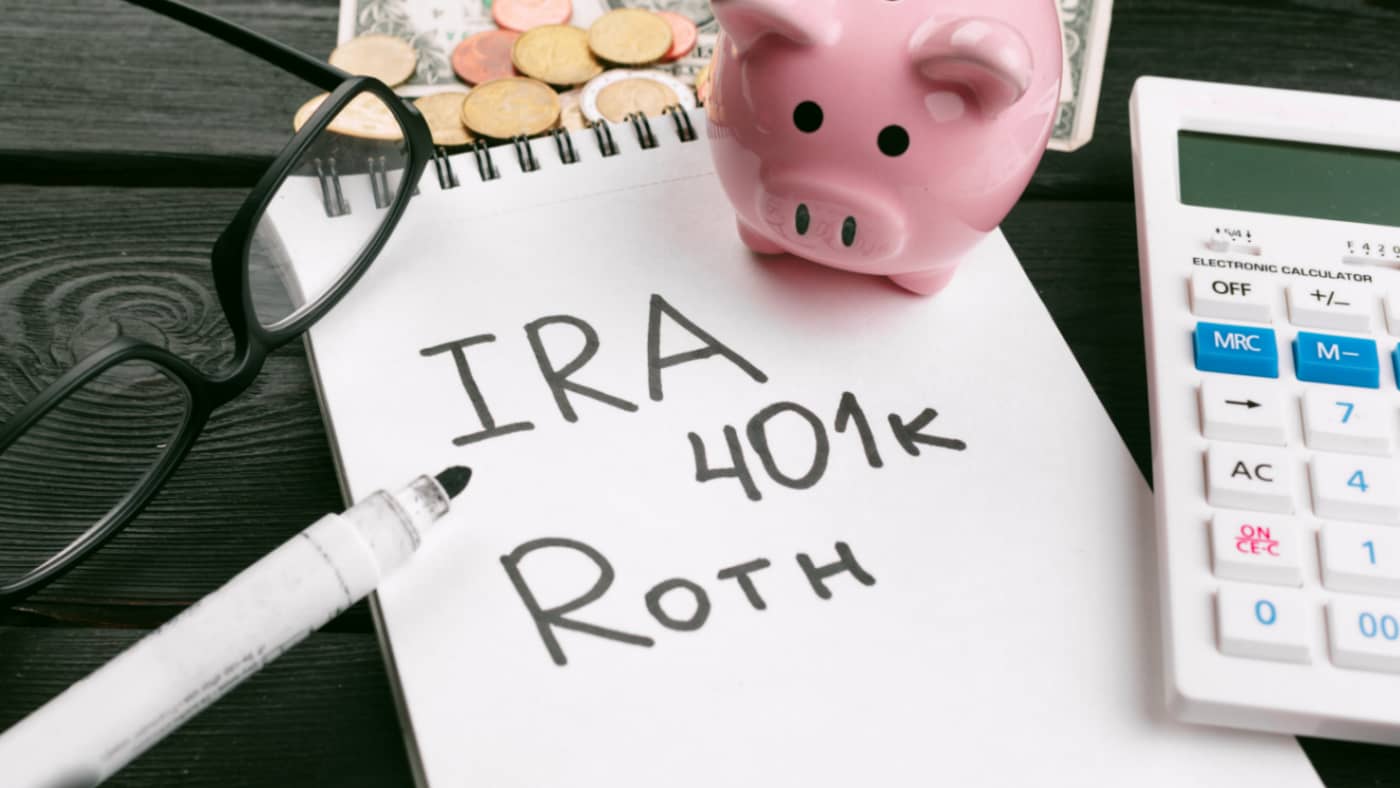Important note: Always consult with your tax advisor to ensure a complex strategy like the Mega Backdoor Roth aligns with your unique financial situation.
Understanding the Mega Backdoor Roth
The Mega Backdoor Roth is an approach for individual investors to contribute more to a Roth IRA and/or Roth 401(k) than the standard contribution limits. It can also be a strategic maneuver allowing high-income individuals to deposit substantial funds into a Roth IRA or Roth 401(k). By converting after-tax contributions to a Roth account, investors unlock tax-free growth and withdrawals, providing a potent tool for wealth accumulation.
Expert Insight: Chris Wang, Director of Research at Runnymede Capital Management, highlights the appeal, stating, “The Mega Backdoor Roth strategy can offer investors the dual advantage of tax-free appreciation and the freedom from mandatory distributions in retirement. This powerful combination not only fosters the potential for wealth accumulation but also provides a tax-efficient retirement income stream, enhancing financial flexibility and control throughout one's golden years.”
Roth Contribution Fundamentals
Before discussing the Mega Backdoor Roth, it's important to understand the basics of Roth retirement accounts. Roth 401(k)s and Roth IRAs allow contributions from already taxed income, offering tax-free growth and qualified withdrawal advantages.
Eligibility and Limits: With a 401(k) retirement plan that offer a Roth feature, Roth 401(k) contributions are universally accessible, but Roth IRA contributions have income-based eligibility criteria. Understanding these limits is essential for effective retirement planning.
Navigating the Backdoor Roth IRA
For high earners exceeding Roth IRA income limits, the Backdoor Roth IRA conversion comes into play. This process involves rolling funds from a traditional 401(k) or IRA into a Roth IRA, providing a strategic workaround.
Strategic Steps: The conversion process includes directing funds into a traditional IRA, with timing crucial to minimize taxable gains. Backdoor Roth IRA conversions face no income restrictions, offering flexibility for high-income individuals.
Mega Backdoor Roth Mechanics
The Mega Backdoor Roth allows individuals to roll over substantial amounts—up to $43,500 in 2023—from a traditional 401(k) to a Roth IRA or Roth 401(k). Successful implementation hinges on maxing out regular 401(k) and IRA contributions and meeting specific employer plan requirements.
Key Employer Plan Features: Successful execution requires enrollment in an employer-sponsored 401(k) plan permitting after-tax contributions and either in-service withdrawals or in-plan Roth rollovers.
Eligibility Check:
The Mega Backdoor Roth serves as a valuable option for those who find themselves ineligible to contribute directly to a Roth IRA due to income constraints. If your earnings exceed $153,000 as a single taxpayer or $228,000 as a married-filing-jointly taxpayer in the 2023 tax year, direct contributions to a Roth IRA may not be an option.
- Confirm your workplace retirement plan's features, as not all plans permit the Mega Backdoor Roth strategy.
- Explore in-service withdrawals and understand how plan rules may change if you switch employers.
- Consult a tax and/or financial professional to assess the strategy's viability for your situation.
Two Simple Steps:
- After-Tax Contributions:
- Make after-tax contributions to your 401(k) or workplace retirement plan.
- After-tax contributions differ from pre-tax and Roth contributions, offering a unique opportunity to exceed annual contribution limits.
- Conversion to Roth:
- Convert after-tax contributions to a Roth IRA or Roth 401(k).
- Explore auto-convert features offered by some employers for seamless execution.
- Navigate potential downsides, such as ordinary income tax on earnings during retirement withdrawals.
Mega Backdoor Roth Considerations
Before embracing the Mega Backdoor Roth, individuals must assess their financial situation. This strategy is suitable for those who've maxed out traditional 401(k) contributions, face Roth IRA eligibility challenges, seek to contribute beyond standard IRA limits, and have surplus income.
Complexities and Provisions: Understanding the pro rata rule, contribution limits, and employer plan features is crucial. Collaborating with a financial advisor ensures informed decision-making tailored to individual needs.
-
-
- Pro Rata Rule: The pro rata rule is a critical consideration when executing the Mega Backdoor Roth strategy. Essentially, it stipulates that when withdrawing funds from a traditional 401(k) account, you cannot selectively withdraw pre-tax or post-tax contributions. The withdrawal must proportionally reflect the ratio of your contribution sources.For instance, if you have a traditional 401(k) balance of $100,000, with $80,000 from pre-tax contributions and $20,000 from post-tax contributions, the pro rata rule mandates that each withdrawal takes out $8 of pre-tax money for every $2 of post-tax money. This rule becomes particularly relevant when contemplating a Mega Backdoor Roth, as it influences the decision-making process regarding withdrawals and rollovers.
- Contribution Limits: To successfully execute the Mega Backdoor Roth strategy, it's crucial to navigate the contribution limits associated with both employee and employer contributions in a 401(k) plan. The strategy involves making after-tax contributions, and these contributions can only be made after reaching the limit for employee pre-tax contributions.In 2023, the employee contribution limit is $22,500 (or $30,000 if 50 or older). For 2024, these limits are $23,000 and $30,500, respectively. However, the overall contribution limit, including employer contributions and after-tax contributions, is $66,000 (or $73,500 if 50 or older) for 2023 and $69,000 (or $76,500 if 50 or older) for 2024.It's essential to be aware of these limits, as exceeding them may result in disqualification of the Mega Backdoor Roth strategy or trigger tax consequences.
- Employer Plan Features: The successful execution of the Mega Backdoor Roth strategy hinges on specific features within an employer-sponsored retirement plan. Not all plans permit after-tax contributions or in-service withdrawals, both of which are essential for this strategy.
- After-tax contributions: After maxing out the pre-tax employee contribution limit, some plans allow additional after-tax contributions. These contributions are crucial for the Mega Backdoor Roth strategy, as they form the basis for subsequent Roth conversions.
- In-service withdrawals: Many 401(k) plans permit participants to take withdrawals while still employed, known as in-service withdrawals. This feature is integral to the Mega Backdoor Roth process. After making after-tax contributions, an in-service withdrawal is typically performed before these contributions generate taxable returns. If a plan doesn't allow in-service withdrawals, executing the strategy may be deferred until leaving the current job, potentially incurring taxes on investment earnings during the rollover.
-
Weighing the Pros and Cons
General Considerations:
- Assess the strategy's worth based on factors like retirement savings, financial goals, and current vs. potential tax rates.
- Acknowledge the complexity of the Mega Backdoor Roth and evaluate your capacity to navigate its intricacies.
Legislative Considerations:
- Stay informed about potential legislative changes. For example, the Build Back Better Act aimed to restrict the use of Roth 401(k) accounts and Roth IRAs by high-income taxpayers, but it failed to pass.
- While the Mega Backdoor Roth is currently permissible, ongoing legislative updates may impact its viability.
Alternatives and Final Thoughts
If the Mega Backdoor Roth isn't feasible, investors can explore alternative avenues, such as investing in taxable accounts, regular Backdoor Roth IRA conversions, or maximizing contributions to a Roth 401(k).
Expert Advice: Andy Wang, Managing Partner at Runnymede Capital Management, says, “While the Mega Backdoor Roth strategy can offer compelling advantages, it's essential for investors to tread carefully and be aware of potential risks. The complexity of this approach, coupled with varying tax implications, requires planning. It's often best to adopt a balanced approach to retirement planning and investing, considering a diversified portfolio and strategies that align with an individual's risk tolerance.”
Informed Decision-Making
In conclusion, the Mega Backdoor Roth offers a potent strategy for substantial retirement savings and tax benefits. However, as with all tax considerations, it's important to consult with a tax professional or financial advisor to ensure the Mega Backdoor Roth aligns with your unique financial goals and circumstances. Whether opting for the Mega Backdoor Roth or exploring alternatives, a strategic and personalized approach is the key to financial success.





